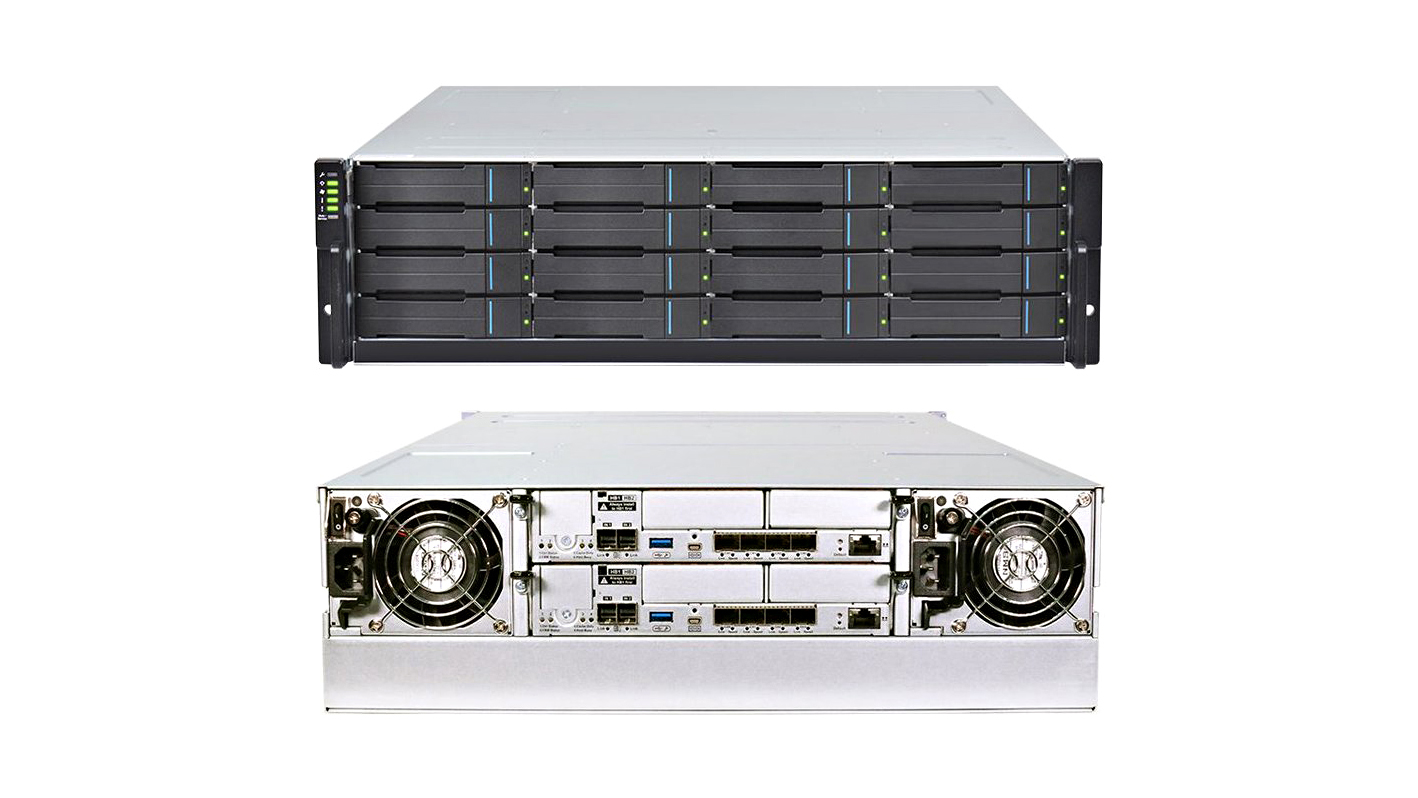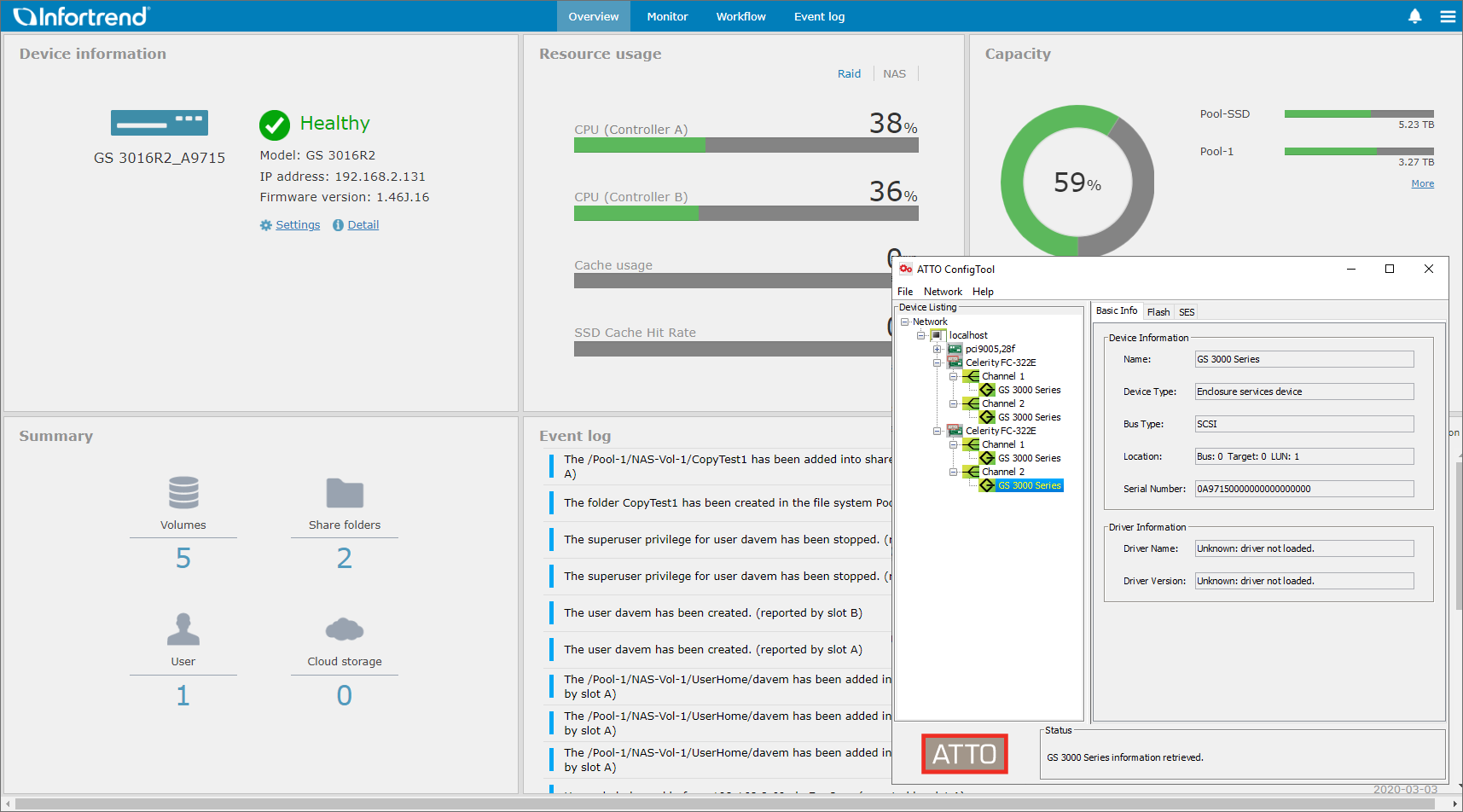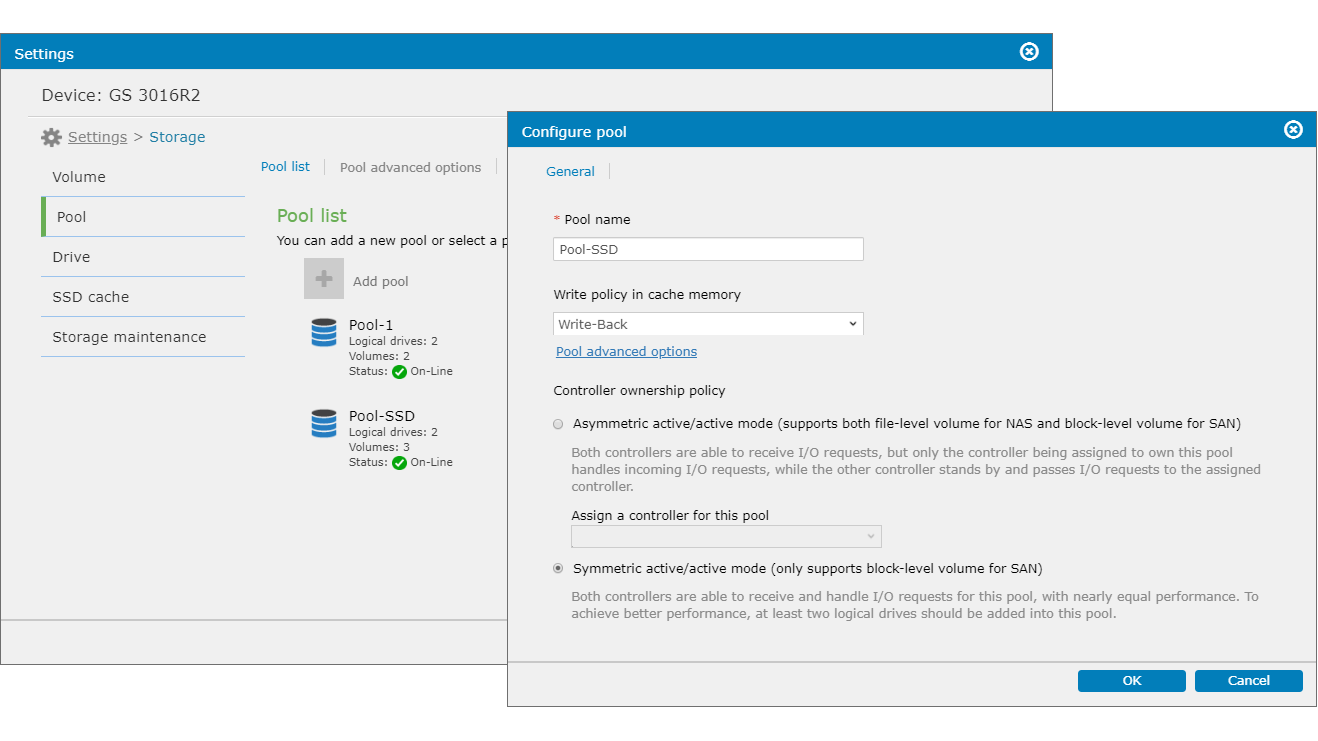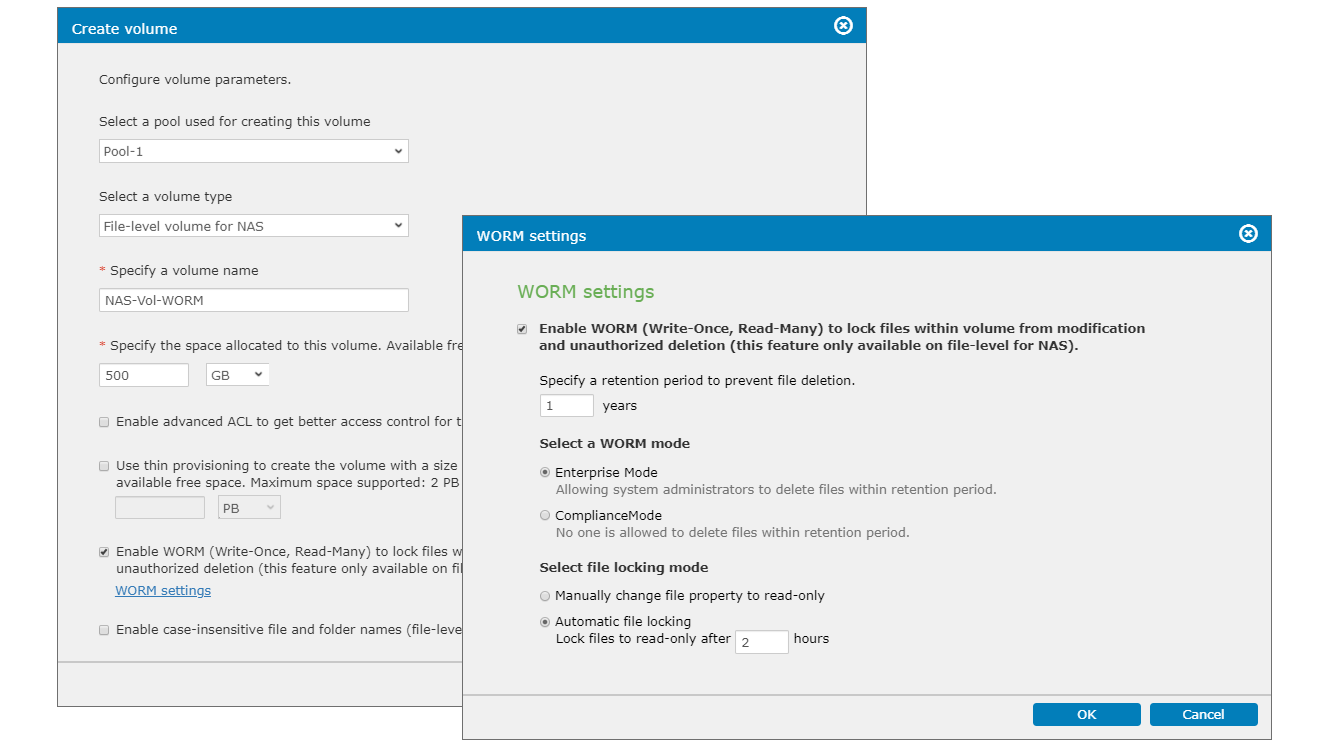Infortrend EonStor GS 3016 Gen2 review: Super-fast storage at a great price
A versatile and powerful unified storage array with a great set of features


-
+
Excellent value
-
+
Top 32Gbps FC SAN performance
-
+
Extensive choice of data ports
-
+
Cloud integrations
-
+
Massive expansion potential
-
-
Noisy cooling fans

Infortrend’s EonStor GS series of storage arrays have always offered a far more affordable alternative to the blue-chips, but the new Gen2 models aim to deliver a boost to performance and features on top of that. They’re a complete unified storage solution - along with NAS, IP SAN and FC SAN services, they can integrate with a heap of cloud storage providers including Amazon S3, Microsoft Azure, Google Cloud and Alibaba Cloud.
On review is the EonStor GS 3016 Gen2, a 3U rack appliance sporting 16 hot-swap drive bays. You can customise it to match your budget as base systems come with a single controller and the price we’ve shown includes dual controllers running in active/active mode for transparent failover.
The new controllers are powered by 2.2GHz Intel Xeon D2123IT CPUs, which offer significant improvements over the Xeon D-1500 CPUs in the EonStor Gen1 models. Along with larger L2/L2 caches, they have twice the number of memory channels and their larger memory support allows the maximum controller cache to be increased from 256GB to 512GB.
Infortrend EonStor GS 3016 Gen2 review: Port permutations
The Gen2 controllers offer even more host port choices, coming with four 10GbE SFP+ data ports and two expansion slots as standard. The latter support a wide range of optional host boards with Infortrend offering models with 16Gbps FC, 32Gbps FC, 10GbE copper, 10GbE SFP+, 25GbE SFP28 or 12Gbps SAS3 ports.

The appliance supports SAS3 HDDs and SSDs, and can also handle SATA devices - although in dual controller configurations, each carrier requires an additional MUX board fitted. Expansion is enormous too; the controllers each have dual external SAS3 ports and can manage up to 448 drives, a capacity which can be doubled to a whopping 896 drives if SAS3 host boards are fitted.
Our appliance was supplied with a dual-port 32Gbps FC host board in each controller and for testing, we fitted eight 960GB Kioxia PM5-R Enterprise SAS3 SSDs. The controllers each have Gigabit management ports for extra fault tolerance and on first contact, the web console fires up a wizard which runs through updating the firmware and creating RAID arrays, storage pools and volumes.
Infortrend EonStor GS 3016 Gen2 review: Versatile storage features
A smart feature is each storage pool can support ALUA (asymmetric logical unit access) for file and block-level volumes or symmetric access for block-level volumes. This allows you to have either active/standby or active/active links across both controllers - a feature we’ve not seen on any competing storage product.
We opted for symmetric access on our SSD-based pool as we wanted to test active/active 32Gbps FC MPIO connections across both controllers. The mode isn’t set in stone and you can change it whenever you want, but it will require a controller reboot.
Volume creation is simple and for NAS file-level access, you can enable WORM (write once read many) if you wish and set a retention period in years. The Enterprise WORM mode only allows system administrators to modify or delete files, while the Compliance mode stops everyone from doing this.

During shared folder creation, you can decide which protocols are enabled, set quotas and use local user access security or integrate with LDAP/Active Directory authentication. Each 10GbE data port on the controllers can be set for block-level SAN or file-level NAS access and any changes will also instigate a controller reboot.
Infortrend EonStor GS 3016 Gen2 review: FC SAN performance
To test performance, we called up the lab’s HPE ProLiant DL180 Gen10 Windows Server 2019 host. This was equipped with dual 16-core Xeon Scalable Platinum 8153 CPUs, 64GB of DDR4 and dual-port ATTO Celerity FC-322E 32Gbps FC adapters.
Initially, we ran Iometer over a single 32Gbps FC connection to a 1TB LUN on the array and saw 24.5Gbits/sec and 24.2Gbits/sec for sequential read and write rates and 24.4Gbits/sec and 17.7Gbits/sec for random operations. Swapping to small 4KB blocks returned 269,750 and 131,000 IOPS for sequential reads and writes and 275,300 and 72,100 IOPS for random operations.
With a dual 32Gbps FC MPIO link across both controllers, we recorded 48.9Gbits/sec and 44.6Gbits/sec for sequential reads and writes with random operations dropping to 48.4Gbits/sec and 24.4Gbits/sec. Average I/O throughput was 426,000 and 210,000 IOPS for sequential reads and writes while random operations settled at 424,000 and 90,400 IOPS.
For our final tests, we used both ATTO Celerity FC cards in the test server to provision a quad-port 32Gbps MPIO link to the LUN and recorded 88Gbits/sec and 49Gbits/sec for sequential reads and writes while random operations turned in 85.9Gbits/sec and 28Gbits/sec. Average IOPS improved by 7-11% but we could see controller CPU utilisation peaking as high as 90% for the write tests.

Infortrend EonStor GS 3016 Gen2 review: Data protection
The price includes a standard snapshot license supporting 64 per volume and 128 per system, which can be increased to 256 and 4,096 respectively. Volume snapshots can be run on-demand or scheduled for as often as every 10 minutes and to recover data, you just choose a snapshot and mount it as a new volume.
Volumes can be mirrored on the same appliance and the standard license enables four replications per volume and 16 per system. SSD caching is an optional feature while remote replication supports block-level replication and file-level Rsync operations.
The EonCloud Gateway component speeds up your cloud storage too, as its file caching keeps frequently used data on the appliance for faster access. Optional features include volume replication to the cloud, archiving and cloud tiering and once a cloud gateway connection has been created, you can assign cloud-integrated volumes to these tasks.
Infortrend EonStor GS 3016 Gen2 review: Verdict
Infortrend’s EonStor GS 3016 Gen2 is a slick unified storage solution that offers a fine blend of storage features at a price the competition will find tough to beat. It’s easy to deploy and supports a wide range of data ports, while the new controllers and their uprated CPUs left a lasting impression in our FC SAN performance tests.
Infortrend EonStor GS 3016 Gen2 specifications
| Chassis | 3U rack |
| Storage | 16 x SAS/SATA LFF/SFF hot-swap drive bays |
| Power | 2 x 530W hot-plug PSUs with cooling fans |
| Controllers | Dual controllers each with the following: |
| CPU | 2.2GHz 4-core Intel Xeon D-2123IT |
| Memory | 16GB DDR4 cache (max 512GB) with capacitor/Flash memory |
| Array support | RAID 0, 1, 3, 5, 6, 10, 30, 50, 60 |
| Host interfaces | 4 x 10GbE SFP+, 2 x host board slots |
| Network | Gigabit management port |
| Expansion | 448 drives (896 with expansion boards) |
| Management | Web browser, Central EonOne |
| Warranty | 3 year limited |
Get the ITPro daily newsletter
Sign up today and you will receive a free copy of our Future Focus 2025 report - the leading guidance on AI, cybersecurity and other IT challenges as per 700+ senior executives
Dave is an IT consultant and freelance journalist specialising in hands-on reviews of computer networking products covering all market sectors from small businesses to enterprises. Founder of Binary Testing Ltd – the UK’s premier independent network testing laboratory - Dave has over 45 years of experience in the IT industry.
Dave has produced many thousands of in-depth business networking product reviews from his lab which have been reproduced globally. Writing for ITPro and its sister title, PC Pro, he covers all areas of business IT infrastructure, including servers, storage, network security, data protection, cloud, infrastructure and services.
-
 Westcon-Comstor and Vectra AI launch brace of new channel initiatives
Westcon-Comstor and Vectra AI launch brace of new channel initiativesNews Westcon-Comstor and Vectra AI have announced the launch of two new channel growth initiatives focused on the managed security service provider (MSSP) space and AWS Marketplace.
By Daniel Todd Published
-
 Third time lucky? Microsoft finally begins roll-out of controversial Recall feature
Third time lucky? Microsoft finally begins roll-out of controversial Recall featureNews The Windows Recall feature has been plagued by setbacks and backlash from security professionals
By Emma Woollacott Published
-
 The UK government wants quantum technology out of the lab and in the hands of enterprises
The UK government wants quantum technology out of the lab and in the hands of enterprisesNews The UK government has unveiled plans to invest £121 million in quantum computing projects in an effort to drive real-world applications and adoption rates.
By Emma Woollacott Published